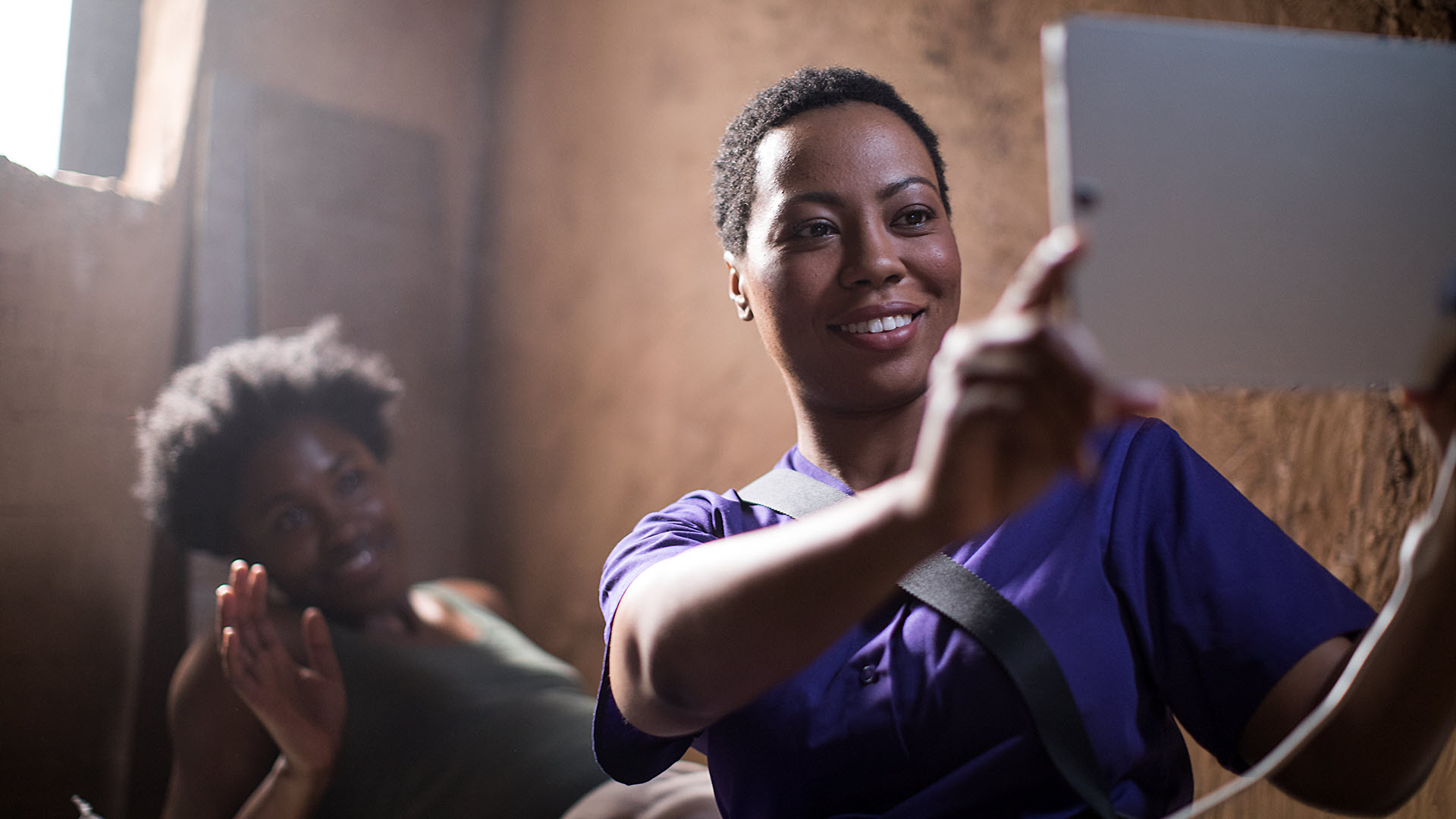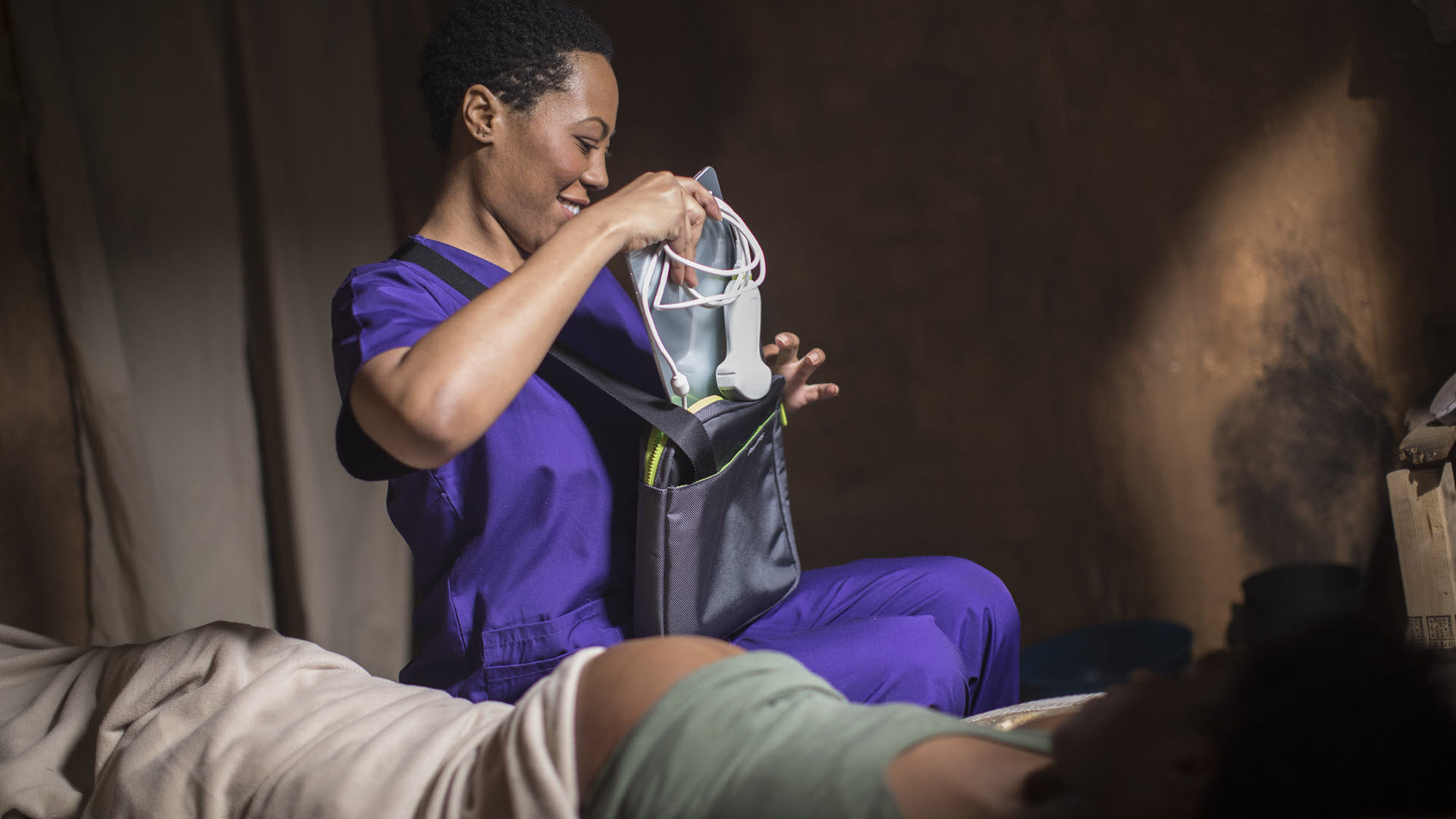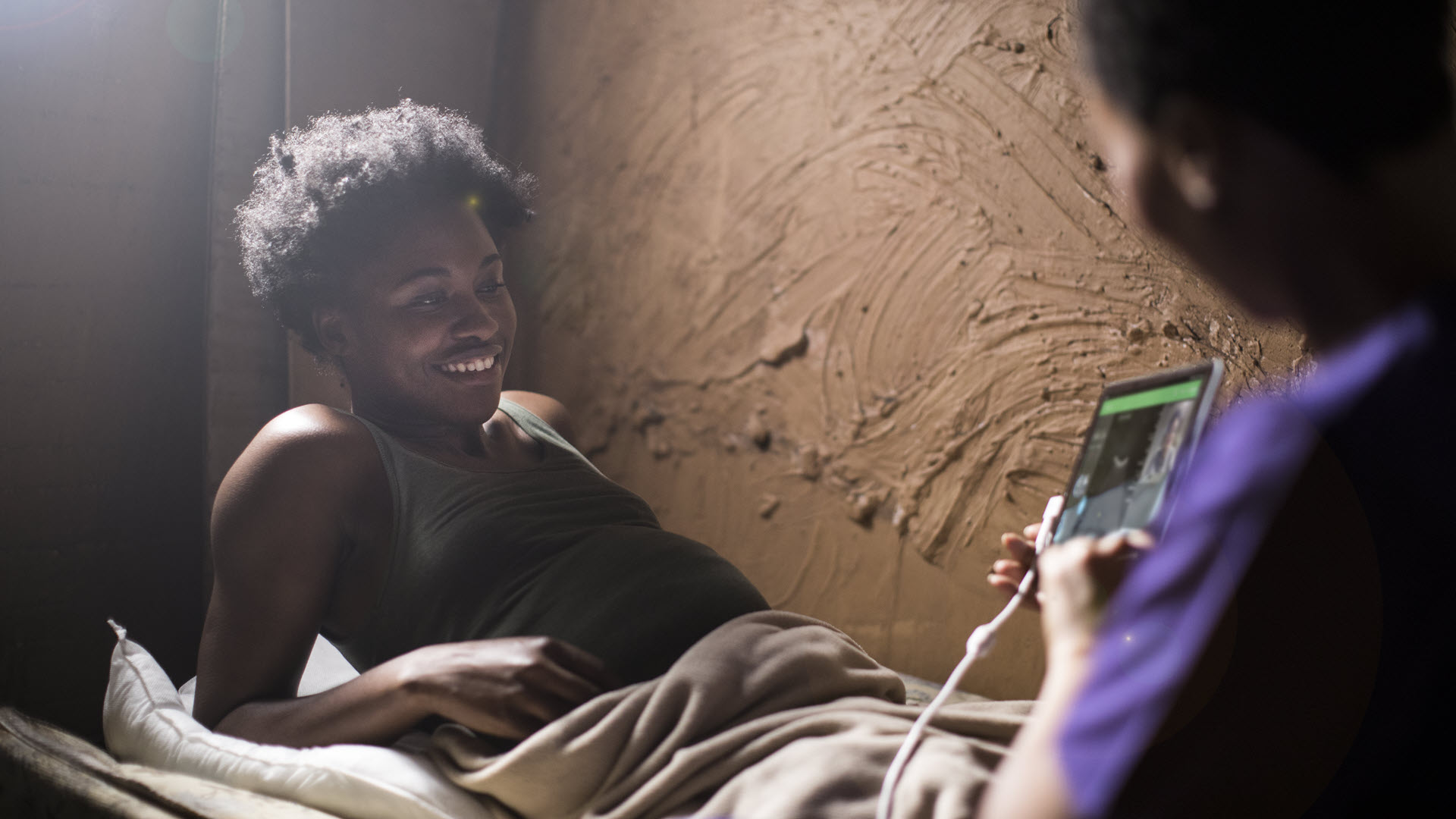While the ongoing study[1] does not have the scale to prove the effects on maternal and child mortality directly, it will measure the effect of the intervention on 17 health outcome indicators that will be strongly indicative for healthy pregnancy outcomes. These indicators range from the quality of early identification and referral of at-risk pregnancies, utilization of antenatal care services, communication between health providers, patient satisfaction and birth preparedness, to acceptability of the referral set up by health workers and government stakeholders.
However, positive health outcomes are only one part of the puzzle.
Health economics and affordability
Apart from technical and clinical feasibility and health outcomes, the question about affordability and sustainable financial models around the proposed solution of decentralized ultrasound screening by midwives, is essential to address as well. Hence, Philips Foundation and Amref International University in Nairobi teamed up to look at economic barriers and financial stimulants.
In the project period, over 1250 pregnant women were screened in 10 health facilities in Kajiado and Kisii counties in Kenya. The study identified women’s motivations to take up routine ultrasound screening and the willingness to pay for it. It was shown that by offering the ultrasound services at the primary care level as part of antenatal care provision, women’s uptake of these services increased to 50% within the pilot sites, compared to less than 10% previously when the service was only offered at a higher-level hospital. Distance turned out to be a key determinant for service uptake, next to women’s education level and quality of patient care and privacy offered.
It is essential to point out that increased awareness among women about the benefits of ultrasound immediately led to improved uptake of obstetric scans – this indicates that community-level awareness is an important factor in achieving the desired care-seeking behavior.
The study revealed a high willingness of women to pay a reasonable price for the service (in the study, it was priced at 5 USD), mainly for confirmation of gestational age, fetal position and fetal sex. A parallel project with PharmAccess – a non-profit organization with a focus on sustainable financing of small and medium-sized health facilities – in Africa, confirmed payment readiness and even showed that women were willing to use a digital form of savings and payment.
The study[1] also explored a potential income model for midwives. Currently, only 30% of the over 3000 nurse-midwives that graduate annually gets formerly employed. The estimate derives from Amref’s Kenya Innovative and Sustainable Solutions for Midwives Education and Employment (KISSMEE) initiative, empowering unemployed and underemployed midwives to apply their professional skills.
Our study extended the KISSMEE model by examining whether small business units of midwives could invest in training and ultrasound equipment and achieve an attractive payback time through the offered obstetric screening. It was concluded that this could not yet be realized in the facilities studied, mainly because the realized client flows were not yet high enough – caused by the fact that the study ran in the midst of the COVID-19 pandemic, which had a clear effect on visits to the facilities. However, if the influx of clients can be increased, the business model can be made sustainable. Alternatively, different ownership and income models could be explored.
The above-mentioned projects mainly focused on Kenya. To come to other insights, Philips Foundation also explored beyond these borders.
Operational learnings (from Uganda and Pakistan)
Unlike Kenya, Uganda already has a legal framework for midwives to perform basic screening in rural clinics. Imaging the World – an organization dedicated to increasing access to modern medical imaging technology in the most rural and resource-limited areas – has been working in Uganda for 12 years to develop a fully sustainable model for providing ultrasound services in rural areas.










